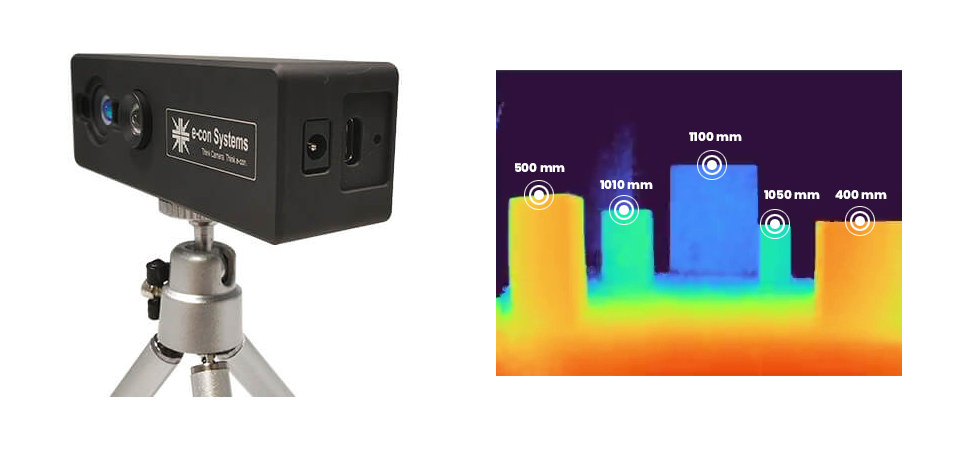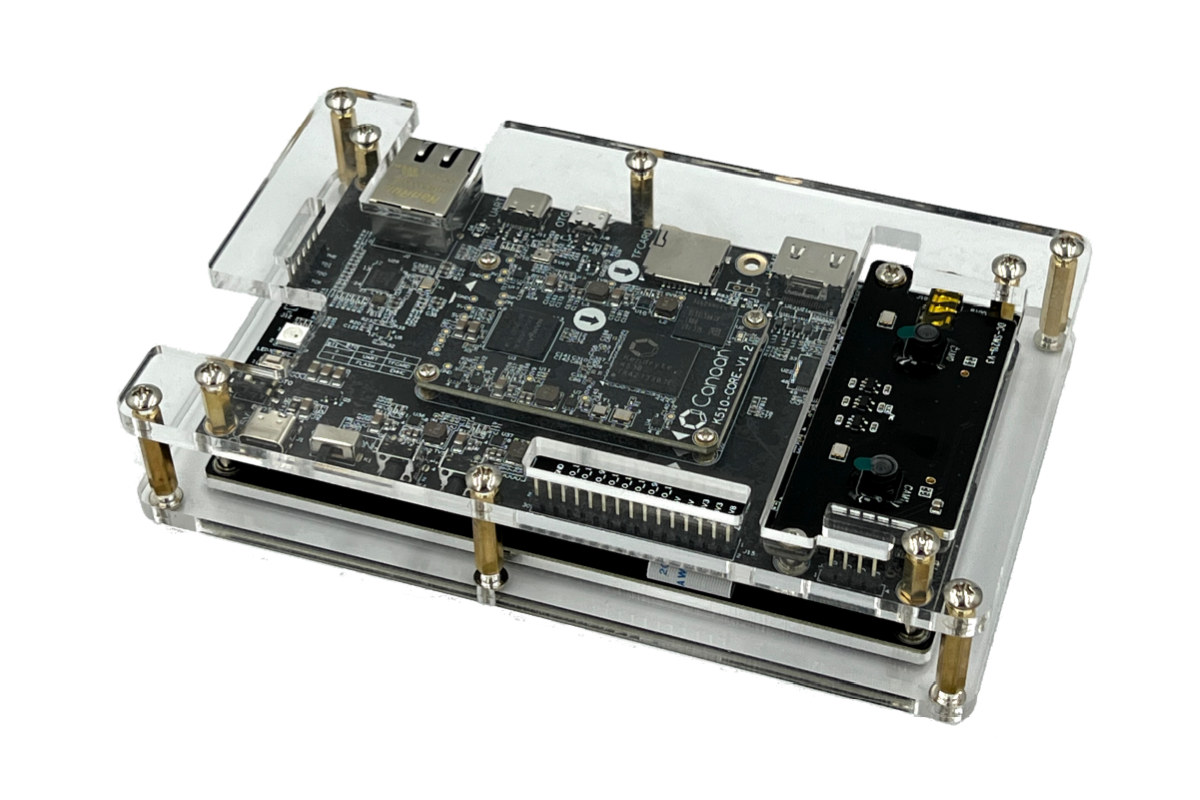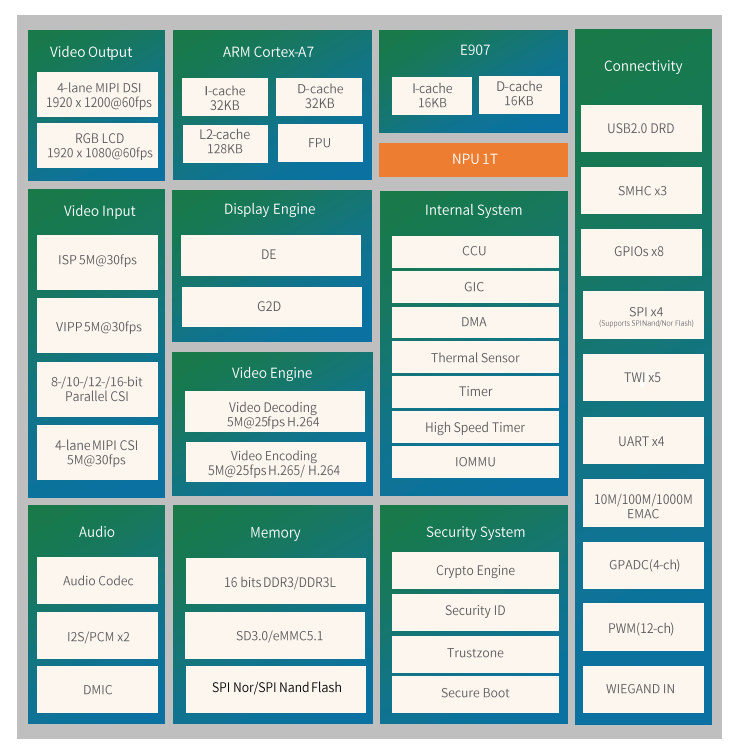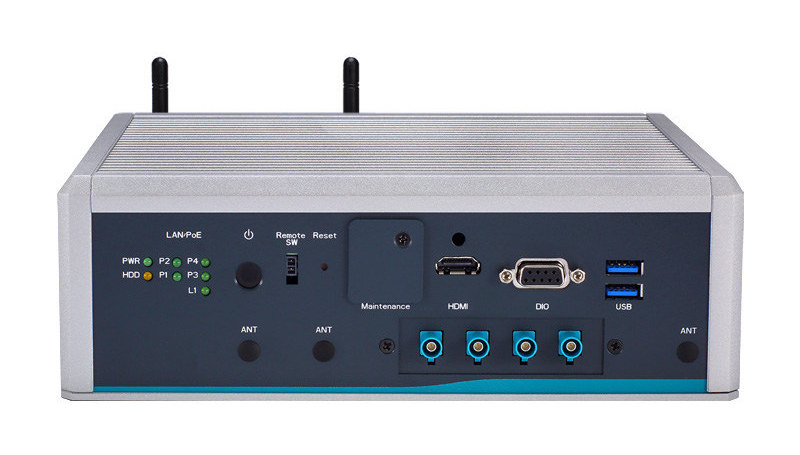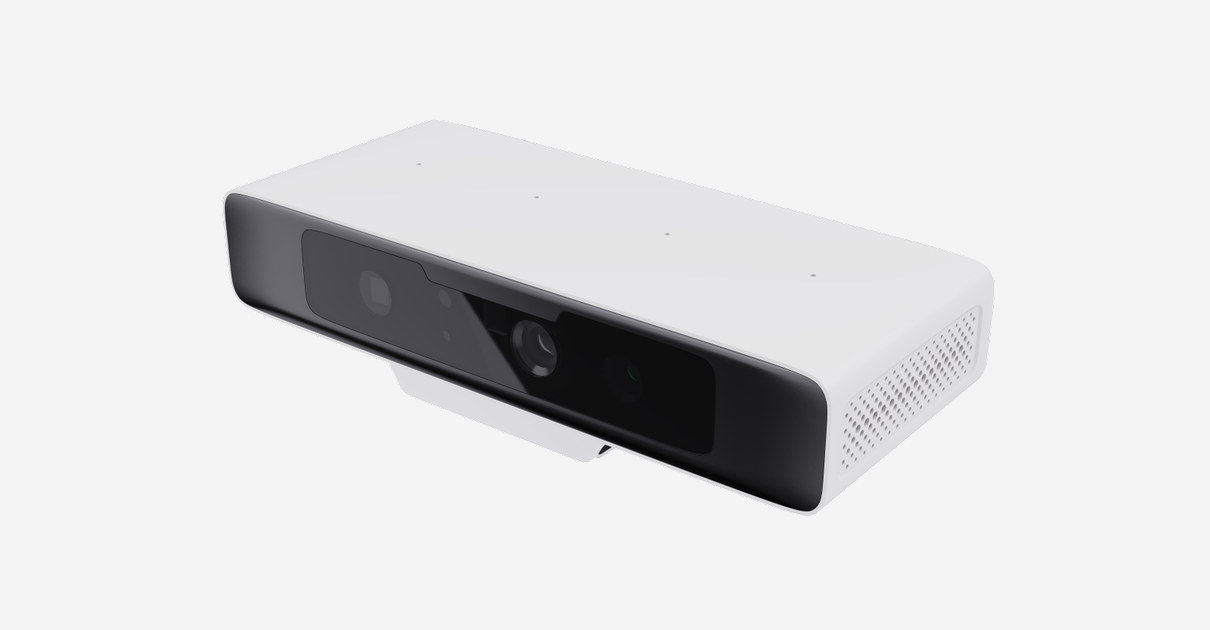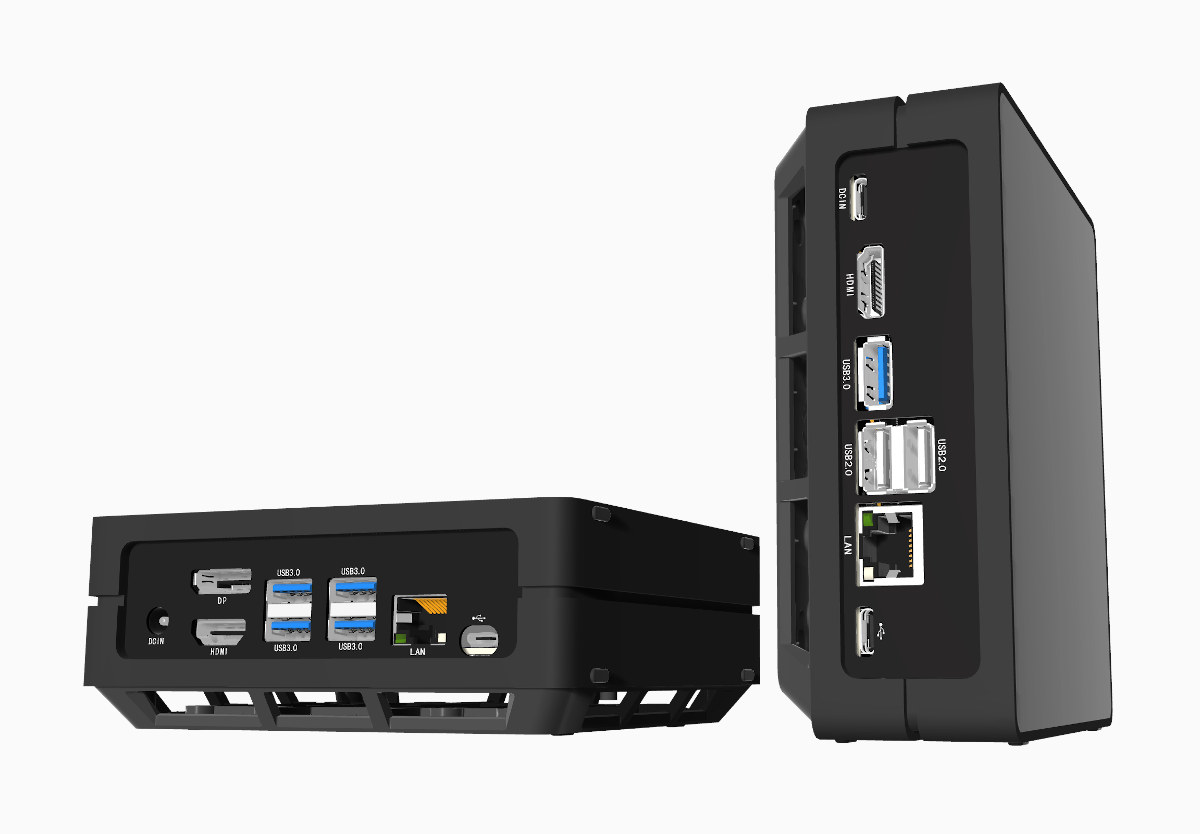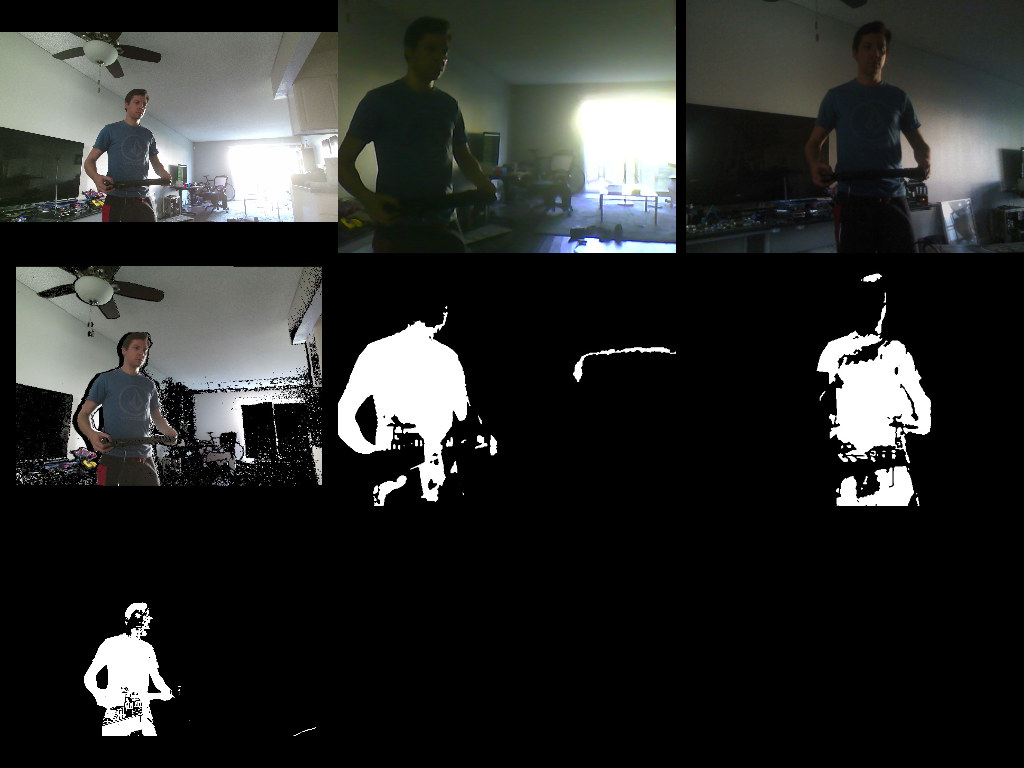DepthVista is a USB Time-of-Flight (ToF) camera designed for precise 3D depth measurement in close range mode (1.2m) and person and/or object detection in far-range mode up to 6 meters away. This ToF camera combines a 3D depth camera capable of 640 x 480 @ 30fps, and an Onsemi AR0234 color global shutter sensor supporting HD and FHD at up to 30fps, plus an 850nm VCSEL (vertical-cavity surface-emitting laser) for safety and the ability to operate in complete darkness. e-con Systems’ DepthVista (See3CAM_TOF_25CUG) specifications: Depth camera 3D camera technology: Time-of-Flight Depth range Near mode – 0.2m to 1.2m Far mode – 1m to 6m Illumination: 850nm pulsed laser (Indoor) Accuracy: Up to 1% depending on environmental conditions Output format: Y16 (raw 12-bit) Resolutions Depth – 640 x 480 @ 30fps IR – 640 x 480 @ 30fps Depth + IR – 640 x 960 @ 30fps FOV – 84.29° (H) […]
Embedded World 2022 – June 21-23 – Virtual Schedule
Embedded World 2020 was a lonely affair with many companies canceling attendance due to COVID-19, and Embedded World 2021 took place online only. But Embedded World is back to Nuremberg, Germany in 2022 albeit with the event moved from the traditional month of February to June 21-23. Embedded systems companies and those that service them will showcase their latest solution at their respective booths, and there will be a conference with talks and classes during the three-day event. The programme is up, so I made my own little Embedded World 2022 virtual schedule as there may be a few things to learn, even though I won’t be attending. Tuesday, June 21, 2022 10:00 – 13:00 – Rust, a Safe Language for Low-level Programming Rust is a relatively new language in the area of systems and low-level programming. Its main goals are performance, correctness, safety, and productivity. While still ~70% of […]
Canaan K510 CRB RISC-V AI development kit ships with dual-camera module and LCD display
Last summer, Canaan introduced the Kendryte K510 tri-core RISC-V AI processor, now also known as Canaan K510, as an updated version of the Kendryte K210 with a much higher 3 TOPS of performance, but at the time, there were no development board and SDK. But I’ve now just been informed of the availability of the Canaan Kendryte K510 CRB (customer reference platform) AI development kit with camera module and LCD display, as well as a software development kit with U-Boot, Linux, and AI tools which can be used to develop smart audio and computer vision applications. Kendryte K510 CRB-Kit development kit specifications: SoC – Canaan Kendryte K510 dual-core RISC-V64 CPU up to 800MHz and 1x RISC-V DSP up to 800MHz for up to 3 TOPS AI performance, ultra-low-power wake-up VAD, H.264 video encoding up to 2 channels @ 1080p60 System Memory – 512 MB LPDDR3 @ 1600 MHz Storage – […]
Allwinner V853 Arm Cortex-A7 + RISC-V SoC comes with 1 TOPS NPU for AI Vision applications
Allwinner V853 SoC combines an Arm Cortex-A7 core with a Xuantie E907 RISC-V core, and a 1 TOPS NPU for cost-sensitive AI Vision applications such as smart door locks, smart access control, AI webcams, tachographs, and smart desk lamps. Manufactured with a 22nm process, the SoC comes with an ISP image processor and Allwinner Smart video engine capable of up to 5M @ 30fps H.265/H.264 encoding and 5M @ 25fps H.264 decoding, offers parallel CSI and MIPI CSI camera interfaces, and well as MIPI DSI and RGB display interfaces. Allwinner V853 specifications: CPU Arm Cortex-A7 CPU core @ 1 GHz with 32 KB I-cache, 32 KB D-cache, and 128 KB L2 cache Alibaba Xuantie E907 RISC-V core with 16 KB I-cache and 16 KB D-cache NPU (Neural network Processing Unit) – Up to 1 TOPS for V853 and 0.8 TOPS for V853S, embedded 128KB internal buffer, support for TensorFlow, Caffe, […]
Axiomtek AIE900-XNX – A 5G connected fanless Edge AI system for AMR, AGV, and computer vision
Axiomtek AIE900-XNX is a fanless Edge AI computing system powered by NVIDIA Jetson Xavier NX system-on-module designed for autonomous mobile robots (AMR), automated guided vehicles (AGV), and other computer vision applications. The system delivers up to 21 TOPS thanks to the 6-core NVIDIA Carmel ARM v8.2 (64-bit) processor, NVDLA accelerators, and 384-core NVIDIA Volta architecture GPU found in the Jetson Xavier NX module. The AIE900-XNX Edge AI computer also comes with a 5G module for high-speed cellular connectivity and supports SerDes, PoE, and MIPI CSI cameras for video processing. Axiomtek AIE900-XNX specifications: NVIDIA Jetson Xavier NX system-on-module with CPU – 6-core NVIDIA Carmel Armv8.2 64-bit CPU with 6 MB L2 + 4 MB L3 cache GPU – 384-core NVIDIA Volta GPU with 48 Tensor Cores AI Accelerator – 2x NVDLA System Memory – 8GB 128-bit LPDDR4x onboard Storage – 16GB eMMC flash Storage – M.2 Key M 2280 with PCIe […]
Orbbec Persee+ 3D AI camera runs Ubuntu or Android on Amlogic A311D processor
Orbbec Persee+ is a 3D depth camera running Linux with AI capabilities thanks to Amlogic A311D hexa-core processor equipped with a 5 TOPS NPU (Neural-network Processing Unit). The Persee+ is designed to help researchers, engineers, and hobbyists implement advanced uses for 3D imaging. Orbbec has been around for several years with the first product we covered here being the Orbbec Persee 3D depth camera running Ubuntu or Android on Rockchip RK3288 processor and unveiled in 2015. Last year, the company introduced the Zora P1 Amlogic A311D development board for Orbbec 3D cameras, so in a way, the Orbbec Persee+ is born from the work done on the Persee camera and Zora P1 over the years. Orbbec Persee+ 3D AI camera specifications: SoC – Amlogic A311D hexa-core processor with 4x Cortex-A73 cores, 2x Cortex-A53 cores, Arm Mali-G52MP4 GPU, 5 TOPS NPU System Memory – 4GB RAM Storage – 8GB (specs) / […]
reComputer Jetson mini PCs feature Jetson Nano or Xavier NX modules
Seeed Studio’s reComputer Jetson series mini PCs are built around NVIDIA Jetson Nano or Xavier NX system-on-module and designed for Edge AI applications. Four models have been designed with the Jetson-10-1-A0 mini PC equipped with a carrier board of the same name and Jetson Nano module, while the Jetson A206 carrier board is integrated into Jetson-10-1-H0 also with Jetson Nano, as well as Jetson-20-1-H1 and Jetson-20-1-H2 based on Jetson Xavier NX with 8GB and 16GB RAM respectively. Jetson-10-1-A0 mini PC and carrier board Specifications: Jetson Nano SoM CPU – Quad-core Arm A57 processor @ 1.43 GHz GPU – Maxwell GPU with 128 CUDA cores System Memory – 4 GB 64-bit LPDDR4 25.6 GB/s Storage – 16 GB eMMC 5.1 Flash Video Encode – 4K @ 30 | 4x 1080p @ 30 | 9x 720p @ 30 (H.264/H.265) Video Decode – 4K @ 60 | 2x 4K @ 30 | 8x […]
OASIS – ROS 2 based Smart Home operating system integrates with Kodi
OASIS is a Smart Home operating system based on ROS 2 that currently implements computer vision, input streaming, and general automation features, and can be integrated into Kodi media center. The operating system was recently released by Garrett Brown (a.k.a. garbear or eigendude), who is also known for being the RetroPlayer developer from Team Kodi/XBMC, and provides a complete implementation of the Firmata protocol for communicating with Arduino boards, plus additional support for temperature and humidity sensors, I2C, servos, sonar, SPI, stepper motors, and 4-wire CPU fans. Two main use cases are computer vision and input streaming at this time. The illustration above shows the former with the Kinect 2 driver ported to ROS 2, a background subtractor on all camera feeds using bgslibrary C++ background subtraction library, and Kodi as the visual interface. The second, input streaming, can be seen below with a Lego train (including a Falcon spaceship!) […]


